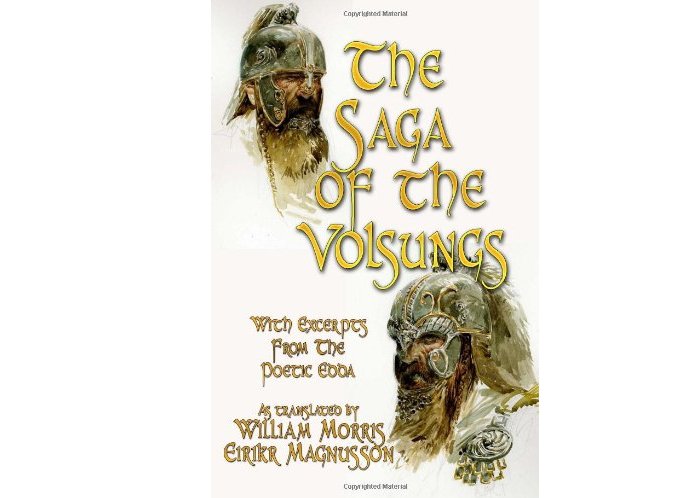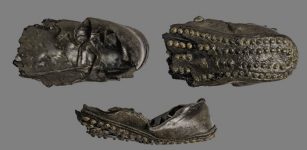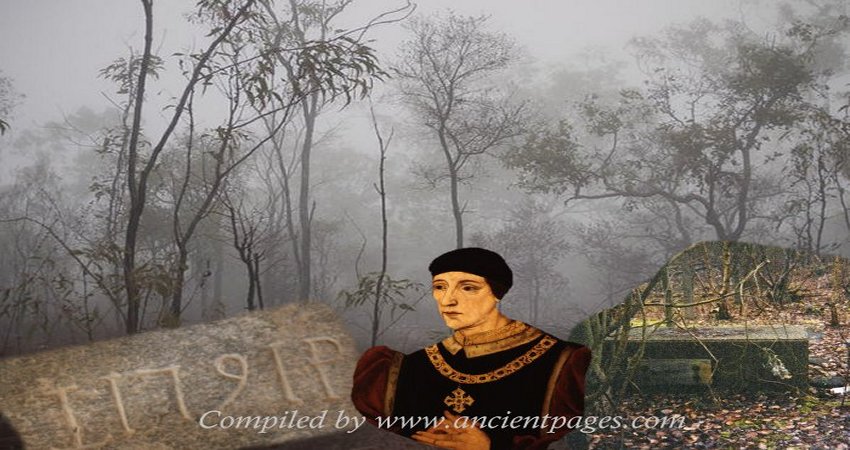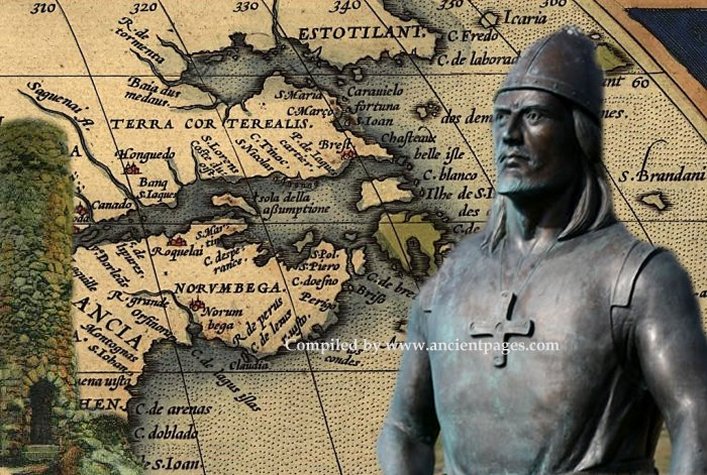Norse Legend Of Hero Sigmund And The Magical Sword In The Branstock Tree
MessageToEagle.com – Sigmund was a Norse hero famous for being the only one who was able to pull out the enchanted sword from the ever so mighty Branstock tree mentioned in the Sigurdsaga that is part of the Volsunga Saga (Völsunga Saga).
The Branstock tree was a large oak growing inside Volsungs great hall.
Sigmund had nine brothers and a twin sister named Signy, who he enjoyed a close relationship with. Their parents were Völsung and Hljod.
One day, Siggeir, king of Gothland, came and asked for Völsung, his daughter’s hand in marriage. Völsung agreed, though Signy did not want to marry Siggeir, knowing him to be treacherous and murderous king. Signy unsuccessfully tried to persuade her father not to marry her to the king.
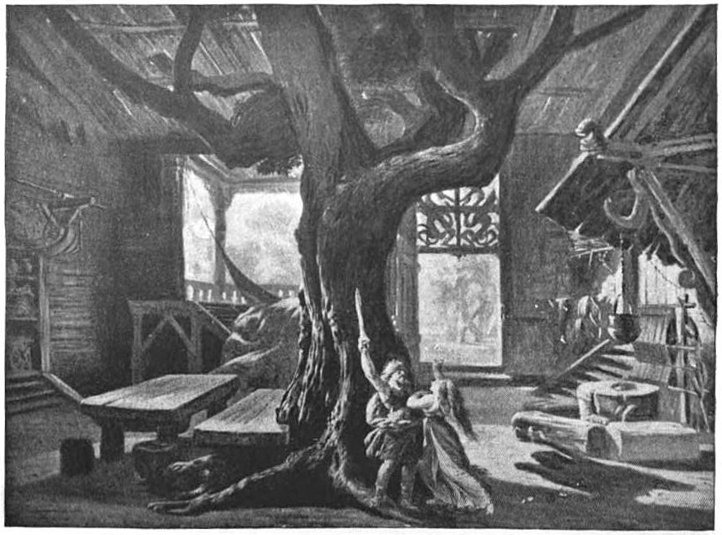
At the wedding a blue-cloaked man with one eye plunged a sword in the Branstock, an ancient oak. The man declared that the sword would be his gift to the person who could draw it out of great oak tree. Then he left the great hall. This sword was said to have been placed there by the great god Odin himself.
Several warriors, including Signy’s father, Volsung, tried to draw the weapon and failed. Sigmund, the tenth and youngest son, however, succeeded. It was said that Volund (or Wayland the Smith) made the sword, and the magic sword was later called Gram (Balmung or Mimung in German myth). The sword had the power to make the owner win all his battles.
In the Edda there is also a tale of a magical sword named Grim which meant “enemy”.
The Gram sword is depicted on an old runestone standing on a hill just outside the Swedish city of Eskilstuna. According to a Norse legend, a dwarf named Fafner killed his father so he could steal a huge, valuable gold treasure.
Now, when Sigmund was in possession of the magical sword, Siggeir was determined to get his hands on this weapon. He offered to buy the sword off Sigmund. Sigmund scornfully rejected Siggeir’s offer of gold. Furious and offended by the young man’s reply, Siggeir was determined to destroy Volsung’s family.
With the help of his shape-shifting mother, Siggeir managed to kill Völsung and his nine sons, but not Sigmund because his twin sister Signy helped him escape.
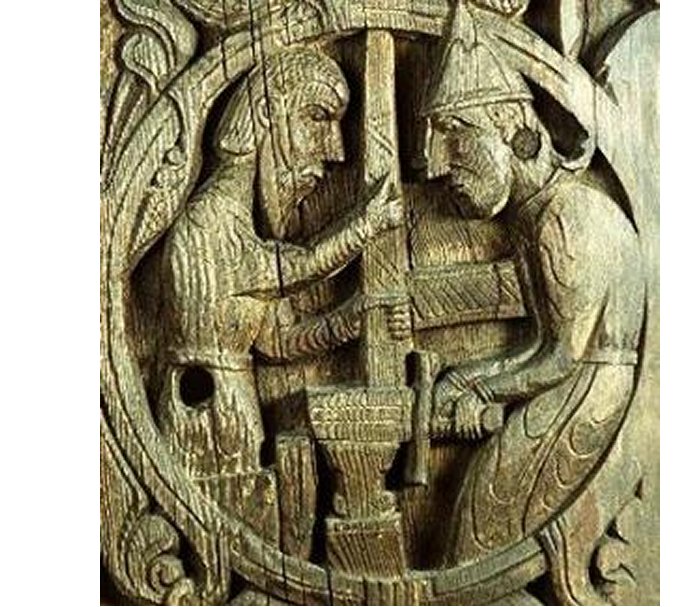
To avenge their family’s death, Sigmund and Signy then became allies. Sigmund hid in the deep and dark woods, and Signy sent him whatever he needed from the palace. However, they both knew they could not defeat Siggeir on their own. With help of a witch, Signy disguised herself as a völva, a female shaman and seer in Norse mythology. She managed to sleep with Sigmund and conceive a child named Singjötli. With Singjötli by his side, Sigmund was then able to avenge his family’s death. They set fire on the palace, killed Siggeir and everyone in it, except for Signy. Sigmund then returned to his homeland with Singjötli and became king. Later, he got married to Borghild and had two children with her, Helgi and Hamund. However, the marriage did not last long because Borghild ended up poisoning Singjötli.
See also:
Fascinating Myths And Legends From Across The World
Tyrfying And Gram: Two Magical Swords In Norse Mythology
Uggly Trolls – Fascinating Mythical Creatures Of Scandinavia
Mystery Of The Kusanagi Treasure: The Legendary Sword
Unravelling The Mystery Of The Ulfberht Sword – An Ancient Viking Artifact Far Ahead Of Its Time
Sigmund married Hjordis, the daughter of King Eylimi, but that too turned into a disaster.
Hjordis had another suitor, King Lyngi and when she got married to Sigmund, he became jealous and sought revenge.
King Lyngi waged war against Sigmund and his father in-law Eylimi. In this battle Eylimi was killed and Odin, in disguise of an old beggar, fought Sigmund and shattered the sword to pieces, which left him vulnerable to the attacks of his enemy. Sigmund was severely wounded and on his death bed, he asked his pregnant wife, Hjordis, to collect the shattered sword and to give it to their son when he grew up. Their son was the famous dragon slaying warrior, Sigurd.
The Völsunga Saga is a legendary saga, a late 13th century Icelandic prose rendition of the origin and decline of the Volsung clan (including the story of Sigurd and Brynhild and destruction of the Burgundians). It is largely based on epic poetry. The earliest known representation of this tradition is in pictoral form as the Ramsund carving, Sweden, which was created c. 1000 AD. The origins of the material are considerably older, however, and it echoes real events in Central Europe during the fifth and sixth centuries. In this manuscript, the saga leads straight in to Ragnars saga loðbrókar. The Middle High German epic poem Nibelungenlied is based largely on the old stories, which were commonly known in all of the Germanic lands from the early Middle Ages on, but reworks the material into a courtly medieval setting. Read more
The Völsunga Saga is a story about love and betrayal, adventure and tragedy, expanding over several generations. It was written by an unknown author from Iceland in the thirteenth century.
Copyright © MessageToEagle.com All rights reserved. This material may not be published, broadcast, rewritten or redistributed in whole or part without the express written permission of MessageToEagle.com

